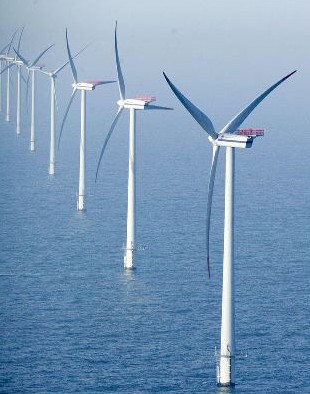Wind project developers were the biggest winners in an auction to award contracts to renewable energy proponents by the UK government.
The government awarded contracts worth to £315m (US$489 million) per year for 15 years to 27 renewable electricity projects under the so-called Contracts for Difference. Under these contracts, developers are paid for each megawatt-hour of power produced, which offers them long-term certainty.
The auction has driven down prices, by as much as 58% for some technologies, the government said. The projects will lead to the UK emitting 4 million fewer tonnes of CO2 into our atmosphere each year.
The technologies that won contracts included onshore and offshore wind, solar, energy-from-waste combined heat and power, and advanced energy conversions. In total, 1,162 megawatts of offshore wind projects won contacts, including a 714-megawatt project developed by ScottishPower, and a 448-MW plant developed by Maninstream Renewables.
A total of 15 onshore wind projects won contracts, totalling 749Mw of capacity. The successful projects included RWE Innogy GmbH for three onshore wind projects totaling 166 megawatts, and Infinergy for a 166-MW farm. Five solar projects, two energy-from-waste facilities and three
The solar industry expressed disappointment at receiving only a fraction of the contracts.
“For us the results speak for themselves,” said Alex Fornal, head of project development at solar company Juwi. “Wind has apparently taken all or most of what was an already a miniscule CfD budget. If there were any successful solar farms they have taken up whatever “crumbs” were left over after wind projects were granted CfDs.
“We are very disappointed but we will now look to the next government to apply a more sensible budget to the next allocation round this coming October – a budget that is fit for purpose and that provides the support for solar that it deserves. If properly supported solar will become the first renewable to compete with conventional generation and reach grid parity by the end of this decade.”
